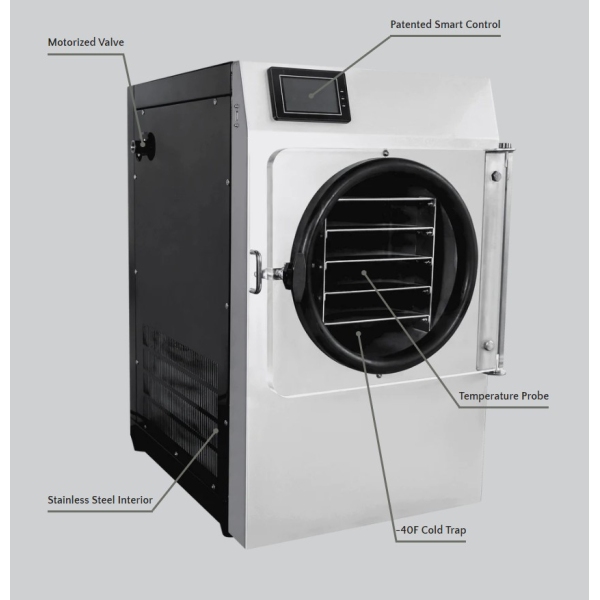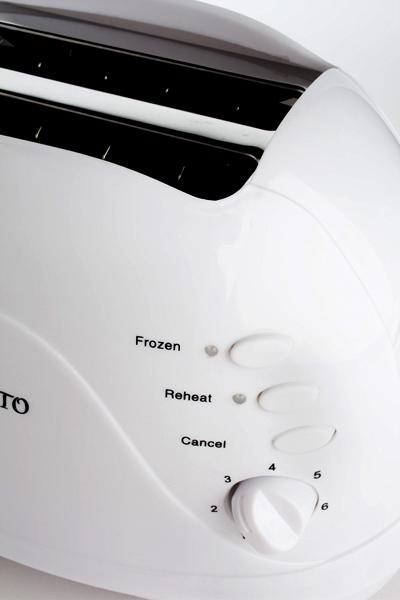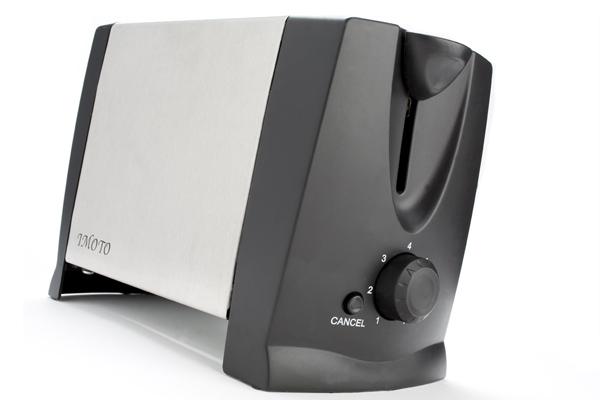- Product Details
Stay Fresh Freeze Dryer 110 Volt For Home DIY Prepper Camping Plant Factory
YOUR BEST PRESERVATION OPTION. Freeze drying is easier than ever. In about a day, your food is freeze-dried, packaged and ready for a shelf-life of up to 25 years.
Patented Smart Control
Freeze drying at home has never been easier with the patented StayFresh automated freeze drying algorithm (U.S. 11,287,185).
For beginners, just prepare the food, press a few buttons, and you're all set. The machine will figure out the rest of the work to freeze dry your food. When it stops, it beeps to let you know your freeze dried food is ready!
For advanced users, there are options for you to run the drying process by trial and error in order to find the optimal solution, which can significantly reduce cost/time and increase yield in production runs.
MODEL 4H11560US
- Patented smart freeze drying algorithm.
- Multiple drying methods for beginners and advanced users.
- Motorized ball valve for oil contamination prevention.
- RTD Temperature sensors for drying assistance.
- Industrial grade glass-to-metal seal feedthrough
- Solid state relay for the heater. All replaceable relays.
- Stainless steel/aluminum construction for major parts.
- Process up to 12lb of food in one batch.
- Main drying time 16 - 30 hours for 8lb of food.
- Include four trays as one set. Tray size 8 in. x 20 in. x 0.75 in.
- Freeze dryer weighs (vacuum pump excluded) 165lb.
- Freeze dryer dimension W 20 in. x D 26 in. x H 31 in.
- Freeze dryer cold trap (bottom of chamber) -40F.
- Vacuum pump weighs 36 lb.
- Vacuum pump dimension W 5.5 in. x D 15.5 in. x H 10 in.
- Vacuum pump flow rate 7.2CFM.
Installation Requirement:
- A dedicated 15 Amp electrical outlet.
Free Accessories:
- An impulse sealer and 100 mylar bags (7-3/4 in. x 11-3/4 in.)
Shipping:
The freeze dryer is shipped in two boxes on a pallet: a 174lb freeze dryer box of size 25"x29"x36", and a 45lb accessory box of size 18"x8.5"x14.5". The pallet size 40"x26"x41". The entire shipment weighs about 240lb.
What is Freeze drying?
Freeze Drying also known as lyophilization or cryodesiccation, is a low temperature dehydration process that involves freezing the product, lowering pressure, then removing the ice by sublimation. This is in contrast to dehydration by most conventional methods that evaporate water using heat.
Because of the low temperature used in processing, the quality of the rehydrated product is excellent. When solid objects like strawberries are freeze dried the original shape of the product is maintained. If the product to be dried is a liquid, as often seen in pharmaceutical applications, the properties of the final product are optimized by the combination of excipients (i.e., inactive ingredients). Primary applications of freeze drying include biological (e.g., bacteria and yeasts), biomedical (e.g., surgical transplants), food processing (e.g., coffee) and preservation.
Freeze Drying Terminology
Amorphous
Multi-component mixtures that do not crystallize and do not have a eutectic point. They turn into a ‘glass’. For amorphous materials, freeze drying typically needs to be performed below the glass transition temperature.
Annealing
The process of freezing, then warming a material to allow crystals to grow during freeze drying process.
Backstreaming
A process whereby hydrocarbon vapors from the vacuum pump can leave the pump and enter into the condenser or drying chamber.
Blank-Off Pressure
This is the ultimate pressure the pump or system can attain.
Bound Water
Water strongly bounded to the product with a relatively high bounding energy and whose presence in the product is necessary for the stability of the material. This does not take part in the freezing process.
Breaking Vacuum
Admitting air or a selected gas to an evacuated chamber, while isolated from a vacuum pump, to raise the pressure towards, or up to, atmospheric.
Cake
The porous and spongy structure-like material resulting from the lyophilization process; or the solid content remaining after the freeze drying process.
Collapse
The point at which the product softens to the extent that it can no longer support its own structure.
Condenser
The component of a vacuum freeze dryer that is designed to remove solvent vapor (mainly water vapor) from the gases in the chamber to prevent them from reaching the vacuum pumping system.
Circulation Pump
A pump for conveying the heat transfer fluid.
Conax Connection
A device to pass thermocouple wires through and maintain a vacuum tight vessel.
CPP
Critical process parameters (ex. Freezing rate, primary & secondary drying, pressure)
CQA
Critical quality attributes (ex. moisture, stability)
Critical Temperature
During freeze drying, the maximum temperature of the product before its quality degrades by melt-back or collapse.
Crystalline
A highly ordered solid matrix of material.
Design Qualification (DQ)
The process used to verify that the freeze dryer will be constructed to reach the URS given by the customer and the functional specifications.
Dehydration
The process of removing liquid from an object or substance, also known as drying.
Deposition
The process of changing a gaseous substance into a solid is deposition, the reverse of sublimation.
Desiccant
A drying agent.
Desorption
Also known as secondary drying; this process involves the removal of excess moisture (bound water) by increasing the temperature of the product and reducing the partial pressure of water vapor in the container.
Eutectic Point or Eutectic Temperature
The point at which the product only exists in the solid phase, representing the minimum melting temperature. Not all products have a eutectic point, or there may be multiple eutectic points.
Evaporation
The process of converting a liquid into a gaseous state. This often happens because of temperature changes.
Factory Acceptance Test (FAT)
The verification process made by the manufacturer and the customer before releasing a freeze dryer from the factory.
Foreline
Tubing fitted between the chamber or an external condenser and the vacuum pumps.
Food Safety
Food safety regulations govern the handling and packaging of food products. Meat, poultry, and eggs have specific regulations for their preparation. Keep in mind that some defrosting methods can unintentionally increase the presence of germs.
Freeze-drying
This preservation process rapidly freezes a substance, and then uses heat and a vacuum to remove the ice. It’s also known as lyophilization.
Freeze-drying Cycle
The freeze-drying cycle describes the entirety of the freeze-drying process, from harvest to packaging.
Freezing
The process of solidifying liquid (or the liquids in a substance) by lowering its temperature.
Free Water
Water with a low desorption energy that has been adsorbed on a cake surface and whose presence in a final cake may cause instability of the dried formulation. It is eliminated in the secondary phase of the Lyophilization process.
Fresh
Fresh produce is recently picked and hasn’t undergone any preservation process or phase change.
Glass Transition
Symbol Tg – A point of condition where frozen material becomes slightly malleable. This is before the thaw point and can be different for different products. Components such as salt, oil, fat, sugar,& solvent and change the Tg which is responsible for collapse of shape when the vapor pressure is increased to this point
Glassy State
System where there is no defined phase diagram and no latent heat associated with a transformation from both liquid to solid or solid to liquid.
Gluten
Gluten is a general name for the proteins found in wheat and helps foods maintain their shape. These include wheat berries, durum, emmer, semolina, spelt, farina, farro, graham, rye, barley, and triticale. Someone suffering from celiac disease cannot eat products containing gluten. The freeze-drying process keeps naturally gluten-free produce safe for celiacs by staying clear of additives during the preservation process.
Gluten-free
A product is gluten-free when it doesn’t contain any gluten proteins. Fruits and vegetables are naturally gluten-free, but be sure to check the label if they’ve been processed.
GMP
Good manufacturing practice promulgated by the US Food and Drug Administration
Heat Recovery
Heat recovery is a system that captures waste heat that can be used again in process i.e. to heat defrost water or fresh air via a heat exchanger.
HTF
Heat Transfer Fluid – a solution used to convey energy. Unlike a refrigerant, HTF can only transfer sensible heat. It may contain anti-freeze properties to work at low temperatures.
Hygroscopic
The ability of a substance to attract water molecules from the surrounding environment through either absorption or adsorption
Inspection Qualification (IQ)
The process used to verify that the vacuum freeze dryer has been constructed according to the manufacturer’s specifications.
Latent Heat
Latent heat does not add to the temperature of product. It is the energy necessary to change of form (water to ice/ water to steam/ steam to water/ ice to water) without any increase in temperature of the water (or product) .Latent heat energy is also consumed in saturated refrigerants.
Leak Rate
Unit of measurement in which the medium being measured (contained system) has a defined decay over a unit of time. Typical usage would include a loss of vacuum pressure over a time interval.
Lyophilization
The scientific term for freeze-drying, or the process of rapidly freezing a substance and then using heat and a vacuum to convert the solid ice into gas.
Melt-back
The total collapse of a given formulation resulting from the presence of a liquid during the primary drying phase.
Non-Condensables
A mixture of gases such as nitrogen, hydrogen, chlorine, and hydrocarbons. They may be drawn into the system through leaks when part of the system is under a vacuum. Their presence reduces the operating efficiency of the system by increasing the condensing pressure.
Nucleation
The formation of ice crystals on foreign surfaces or as a result of the growth of water clusters.
Oil-Mist Filter
In vacuum terminology a filter attached to the discharge (exhaust) of an oil-sealed rotary pump to eliminate most of the "smoke" of suspended fine droplets of oil which would be discharged into the environment.
Operational Qualification (OQ)
The process that verifies that a vacuum freeze dryer provides a safe environment for the manufacture of a material and the necessary operating parameters to conduct the Lyophilization or freeze drying process.
Oil Sealed Rotary Pump
A standard type of mechanical vacuum pump used in freeze-drying with a high compression ratio but having a relatively low displacement (speed) for its size. A two-stage pump is effectively two such pumps in series and can obtain an ultimate vacuum.
Oil Separator
Separates the oil from the compressor discharge gas and returns the oil through the oil float trap and piping to the compressor crankcase.
Particle-size Requirements
The population of particles in a powder that are used to measure quality, consistency, and potency.
Plant-based Proteins
Protein can be found in plants and is often viewed as a healthier alternative to meat protein, as the fat content is lower. Some high-protein produce includes broccoli, spinach, peas, lentils, and kale.
Primary Drying
This is the term used to describe the first Freeze drying phase where ice vapour is sublimating from the saturated (frozen) product and latent heat change is occurring (Ice to vapour)
Real Leak
A vacuum leak resulting from penetration through, in general, the vacuum system.
Reconstitution
The process of adding water to a dried substance returns it to its original state.
Relief Valve
Used for safety purposes to prevent damage in case excessive pressure is encountered.
Rotary Vane Pump
A mechanical pumping system with sliding vanes as the mechanical seal. Can be single or two stages.
Phase Change
When a substance changes consistencies or states through the process of evaporation, condensation, freezing, melting, sublimation, or deposition.
Saturated
|
Where the item described as saturated is in close contact to its liquid or solid state - Saturated vapours are capable of condensing back into their parent body (e.g.: a gas bottle containing some liquid also contains saturated vapor/ ice vapours leaving ice are saturated vapours). It is not possible to superheat a saturated vapour |
Seasonality
The availability of ingredients in a calendar year. Fresh produce is only available during harvest season, making it a seasonal ingredient option.
Sensible Heat
Sensible heat is energy that contributes to raising the temperature of a product.
Shelf life
The amount of time a product can be safely stored without becoming unfit for consumption.
Shelf Compressor (Controlling Compressor)
Used for controlling the shelf temperature, either cooling or from overheating.
Shelves
In terms of the lyophilization process, they are a form of heat exchanger, within the chamber, that have a serpentine liquid flow through them, entering one side and flowing to the other side. They are located in the circulation system.
Self Liquid Heat Exchanger
The transfer of heat from the shelf fluid to the refrigeration system through tubes in the exchanger causing compressor suction gas to warm.
Single Stage Compressor
This is a normal type compressor used in refrigeration. In the lyophilization process it is used to control the shelf temperature, both for cooling and keeping the shelf temperature from overheating using a temperature controller.
Silicone Oil
A heat transfer fluid.
Site Acceptance Test (SAT)
The verification process made by the manufacturer and the customer once a freeze dryer has been installed on the site plant.
Sterilization
The process of making a substance or object free of contaminants, bacteria, or other living microorganisms.
Sublimation
Also known as primary drying; after the material is completely frozen, the pressure in the freeze dryer is reduced, and heat is applied to initiate the sublimation of the ice crystals, which removes the unbound moisture from the product. Less specifically, sublimation is the transition from a solid to a gas phase with no intermediate liquid stage.
Suction Line Accumulator
To provide adequate refrigerant liquid slug protection (droplets of liquid refrigerant) from returning to the compressor, and causing damage to the compressor.
Sulfites
An additive often used during food preservation. StayFresh Freeze Dryer doesn’t add sulfites, sugars, salt, or chemicals to our products during preservation.
Sub Cooling
More common in the refrigeration systems connected to the freeze dryer. Sub cooling is important because it can create an increase in refrigerant performance , and used wisely can help deliver better dryer performance
Super Heat
When vapour leaves the presence of its liquid or solid form and is further heated it is said to be superheated – this can occur with refrigerants and sometimes in the flow of sublimated ice vapours in ‘Secondary drying’
TCE
Trichloroethylene - A heat transfer fluid.
Thermocouple
A metal-to-metal contact between two dissimilar metals that produces a small voltage across the free ends of the wire.
Thermostatic Expansion Valve
An automatic variable device controlling the flow of liquid refrigerant.
TORR
A unit of measure equivalent to the amount of pressure in 1000 microns.
Transition Glass Temperature
The interval of temperatures where the material goes from a glassy state to a rubbery state due to an increase of water mobility in the interstitial.
Triple Point
A low pressure point where water, steam, and Ice can all exist. Below this point Water cannot exist and when sublimation energy is added, Ice will transform from a solid to a vapour without moving through the liquid phase
Unloading Valve
This valve connects the interstage with suction to equalize both pressures during pump-down.
Vacuum Pump
An engineering device designed to produce the low pressure system necessary to drive the Lyophilization or freeze drying process.
Validation Documents
documents that are utilized by the FDA for ensuring compliance to GMPs
Vapor Pressure
Science has publish tables for common items that can be affected by vapour pressure – Water is a good example: water will boil 100°C(212°F) at atmospheric pressure (1000millibar) If we lower the ‘vapour’ pressure then the saturated water will boil at lower pressure. We can use saturated vapour tables to calculate what the new boiling point would be at a different pressure. ‘Water’ will boil at about 1°C at 7millibar.
Virtual Leak
A source of gas (such as water) that is physically trapped within the chamber with only a small, very low conductance path from the trapped pocket
- Loading...












